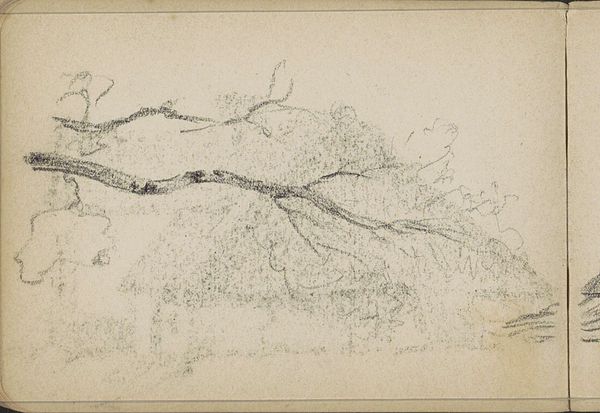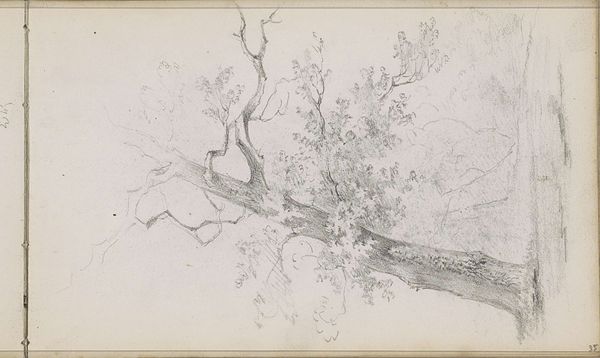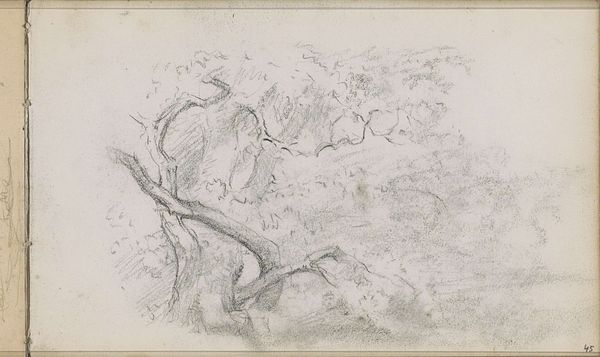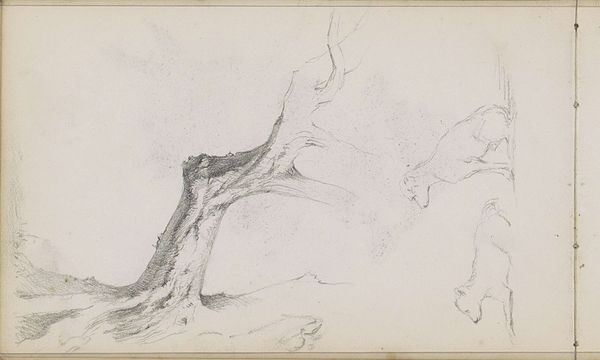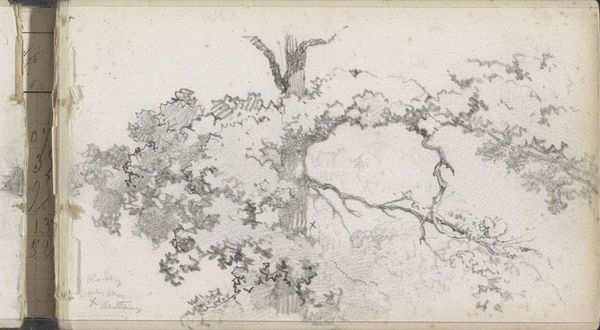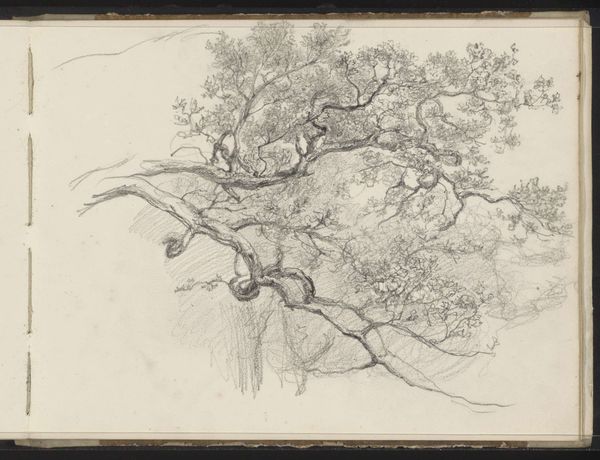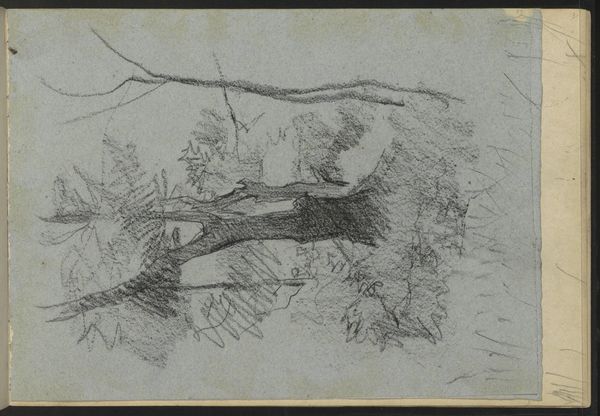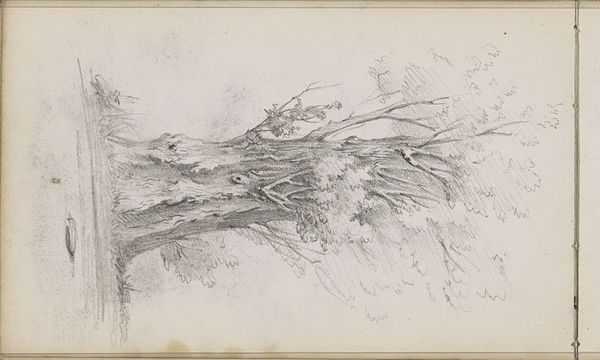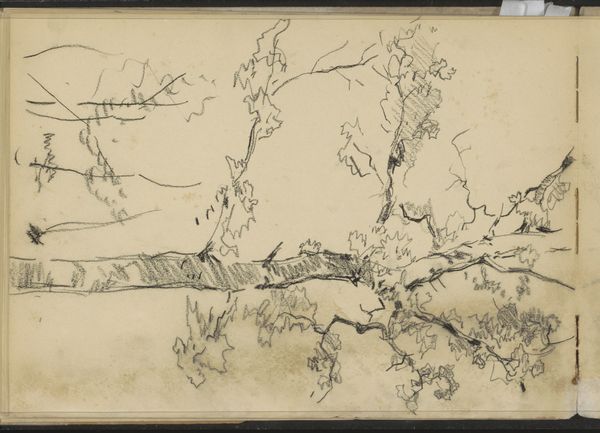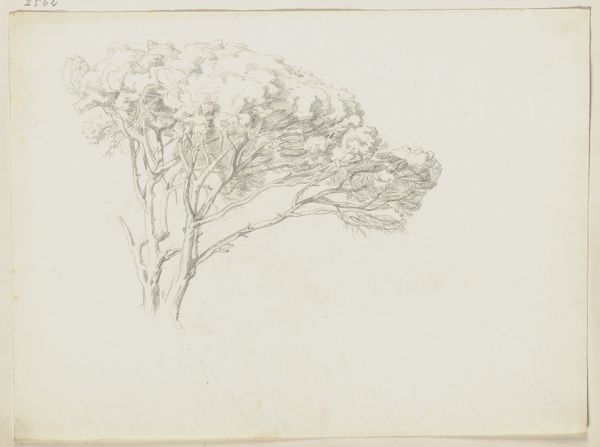
drawing, pencil
#
drawing
#
organic
#
pencil sketch
#
landscape
#
pencil
#
realism
Dimensions: height 142 mm, width 218 mm
Copyright: Rijks Museum: Open Domain
Curator: Willem Cornelis Rip’s pencil drawing, “Boom,” made around 1874 or 1875, depicts the sinuous form of a tree branch, quite closely observed. Editor: It’s a study in light and shadow. You immediately see how the textures of the wood come forward from the bare page, all in the grayscale. Almost monumental, even though it’s “only” a drawing. Curator: Yes, it presents the almost heroic presence of nature. The very choice of subject – the limb – suggests a break or fall, but one that somehow continues to generate life. Consider the history imbued in wood—ships, homes, furniture; what objects were being made while Rip worked on this drawing? Editor: It’s intriguing to consider the labor, the very hands-on work required to produce something like this, using pencils from graphite that had to be mined. Look at the level of control over the pencil required to give this texture; I wonder what his process looked like. Was he sketching quickly in the field, or did he work in a studio? Curator: Well, landscape studies were extremely common, allowing artists to capture elements for more complex narrative compositions later. But I wonder about that choice to present it like a fragment. Could this seemingly broken-off part speak to a larger symbol of resilience, perhaps a response to rapid industrial changes impacting landscapes? Editor: It could be a study of decay and renewal, the endless cycle of nature. Think about all the processes embodied within that single piece of wood, from the tree absorbing nutrients and light to the eventual decomposition of the branch into soil. Each stroke, a material intervention on the page. Curator: Indeed, there's something incredibly humbling about confronting such slow transformations in the face of a constantly changing world. The detail really draws the viewer in, inviting you to almost touch the bark, smell the wood, and think about what all these visual memories trigger. Editor: It’s fascinating how a seemingly simple drawing reveals layers of connection – material, symbolic, and social – connecting us back to Rip's time. It feels far more dynamic than I first gave it credit for!
Comments
No comments
Be the first to comment and join the conversation on the ultimate creative platform.
